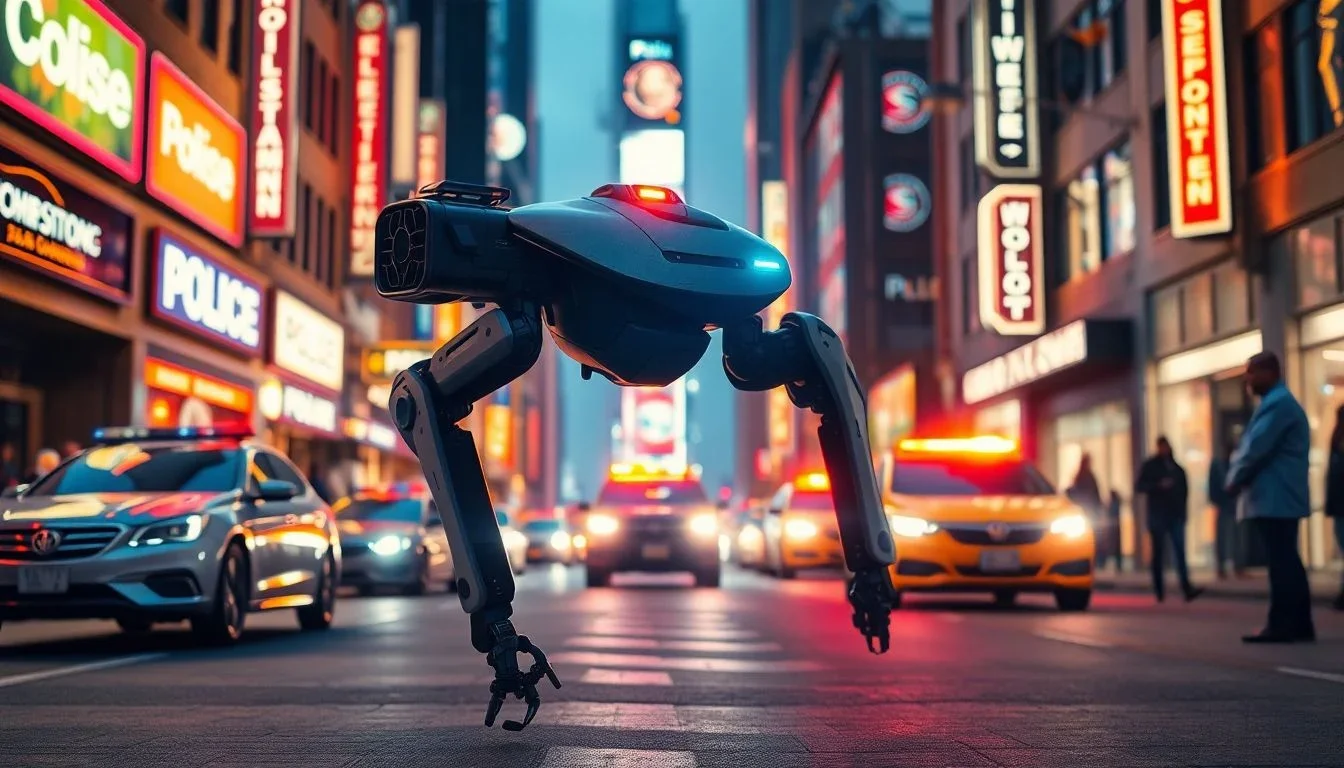Robotics in Policing: Enhancing Law Enforcement with Technology
/By: Joel E. Gordon
Police work is changing fast thanks to robotics. Drones, robots, and smart machines now play a big role in fighting crime. They help keep officers safe, solve cases quicker, and prevent trouble before it happens. As technology improves the future of robot-powered policing looks bright as we’re seeing smarter robots taking on tasks once done only by humans, making law enforcement more effective.
Robots are now helping in risky situations like bomb threats or hostage standoffs. They can reach places people cannot and handle dangerous devices. This means fewer officers are exposed to harm. Robots also assist in getting rid of bombs or checking suspicious packages safely.
Drones and surveillance robots are flying over neighborhoods to catch trouble early. They monitor busy areas for signs of crime or unrest. With real-time data collection, police can predict where crimes might happen next. This proactive approach helps prevent incidents before they occur.
Routine tasks, like filling out reports or collecting evidence, are now automated. Robots can gather evidence or scan crime scenes quickly and precisely; integrating these machines with existing police systems makes operations smoother and saves officers time.
Types of Robots Used in Law Enforcement
Explosive Ordnance Disposal (EOD) Robots
These robots are built to disarm bombs safely. They have arm-like limbs, cameras, and sensors to give officers a clear view of dangerous devices. Case studies show how robots saved many lives during bomb threats, especially in crowded cities.
Drones and Aerial Surveillance Units
Drones come in various sizes with cameras and thermal imaging. They help find lost persons, monitor crowds, or survey accident sites. Drones can access hard-to-reach places quickly, providing critical info in emergencies and search-and-rescue missions.
Ground Robots and Autonomous Vehicles
Small patrol robots move along sidewalks or inside buildings. Some are designed to track suspects or check secure areas. Autonomous vehicles can transport equipment or officers, by reducing response times and improving safety in dangerous zones.
Robotic K-9 Units
Robots that resemble dogs are now used to sniff out drugs, explosives, or even human suspects. They’re more durable and easier to handle than real dogs, especially in harsh environments. These robotic K-9s are often used in hostage situations or bomb detections.
Using robots for surveillance raises worries about invasion of privacy. Citizens want safety but don’t want to feel watched constantly. Balancing the need for security with respecting people's rights is the balance sought.
While laws about policing robots are still developing some areas have rules on how robots can be used, but many questions remain. As technology grows, lawmakers must create clear guidelines to prevent misuse or abuse.
Deciding when a robot should use force or make arrests is tricky. Who’s responsible if a robot's decision leads to harm? Robots can have biases if they rely on certain data, so accountability and fairness are major issues.
Robots are not perfect. They can malfunction or get stuck in tough environments. Weather, dust, or debris can stop them from doing their job well. Overcoming these hurdles takes time and money.
Robots don’t come cheap. Buying, maintaining, and upgrading these machines costs significant funds. Police departments must decide if they’re worth the expenses or if traditional methods still work better.
Some community members and officers feel uneasy about robot use. Trust-building is important. Explaining how robots increase safety without spying on citizens helps gain support.
Smart AI and machine learning will make robots more adaptable. They can learn from situations and improve over time. Also, faster internet via 5G will help robots get data instantly, making responses even quicker.
Clear standards for deploying police robots are needed worldwide. Sharing experiences and creating rules will ensure responsible use. International cooperation can help develop best practices.
Officers need special training to work alongside robots safely. Developing protocols for cooperation is essential. Community engagement also builds trust and transparency about robot use.
Robotics is changing how police work is done. These machines boost safety, help solve crimes faster, and cut down risks for officers. Still, ethical issues, legal rules, and public opinion matter a lot. Finding the right balance between innovation and responsibility is crucial. With proper planning and clear standards, robots can become a powerful tool for a safer society. The future of policing will keep evolving — and robotics will be at its core, helping protect us all.
Joel E. Gordon, BLUE Magazine’s Editor-in-Chief, is a former Field Training Officer with the Baltimore City Police Department and is a past Chief of Police for the city of Kingwood, West Virginia. He has also served as vice-chair of a multi-jurisdictional regional narcotics task force. An award winning journalist, he is author of the book Still Seeking Justice: One Officer's Story and founded the Facebook group Police Authors Seeking Justice. Look him up at stillseekingjustice.com









